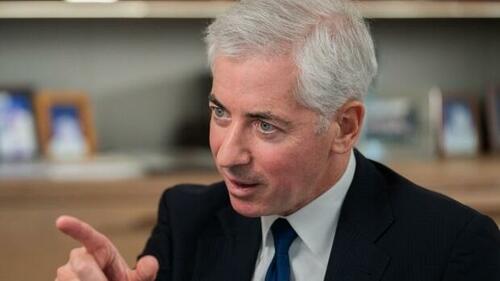Ackman Floats “Immediately Actionable” Blueprint To Free Fannie And Freddie
Bill Ackman thinks he knows what to do to finally resolve the 16-year limbo trapping Fannie Mae and Freddie Mac – the mortgage-finance pillars that remain under federal control over a decade after the financial crisis.
In a Tuesday presentation on X, the billionaire founder of Pershing Square Capital Management outlined a three-step proposal he says would meet the Trump administration’s policy goals, while restoring the companies to private-market discipline. The plan comes amid the White House’s struggle to ease housing costs – which included an absurd idea to roll out 50-year mortgages.
The two government-sponsored entities (GSEs) underpin roughly half of America’s $12 trillion mortgage market. They don’t lend directly – rather, they purchase mortgages from banks and lenders, package them into securities and guarantee investors against losses. This system helps keep credit flowing through economic cycles.
Pershing is the largest common shareholder in the two companies with over 210 million total shares.
Ackman has long argued that the government’s post-crisis control of the two companies which was formalized in a 2008 conservatorship was intended to be temporary, but has dragged on for years beyond its stated purpose.
He proposes the following as an “immediately actionable” roadmap for the Treasury and Federal Housing Finance Agency, which regulates the GSEs.
Step one: Acknowledge the bailout is repaid.
Fannie and Freddie received $187 billion in Treasury support during the crisis. Ackman noted the GSEs have since sent “hundreds of billions” in profits to the federal government through quarterly “net worth sweeps,” far exceeding the original rescue. He urged Treasury and FHFA to formally declare the obligation satisfied—a move that would mark a symbolic break from the financial-crisis era.
Step two: Make taxpayers official owners.
As part of the 2008 rescue, Treasury received warrants to buy up to 79.9% of each company’s common stock at a nominal price. Exercising those warrants, Ackman said, would convert taxpayers’ implicit economic stake into a formal controlling interest—an unusual structure that would leave the U.S. government the majority owner of two publicly traded financial institutions.
Step three: Return the GSEs to the stock market.
Fannie and Freddie were delisted from the New York Stock Exchange after entering conservatorship. Ackman said the companies now meet listing requirements and that relisting would restore liquidity for investors, broaden ownership, and help recapitalize the firms. He argued that with taxpayer ownership approaching 80%, the resulting equity value could exceed $300 billion.
The proposal intersects with a broader debate over the future of U.S. housing finance – a politically delicate realm that has eluded reform under multiple administrations. Supporters of privatization say the GSEs should operate with market discipline and adequate capital so taxpayers are insulated from future downturns. Critics warn that premature release or inadequate safeguards could encourage the kind of risk-taking that contributed to the 2008 collapse.
— Bill Ackman (@BillAckman) November 18, 2025
Tyler Durden
Wed, 11/19/2025 – 17:20ZeroHedge NewsRead More





 T1
T1



